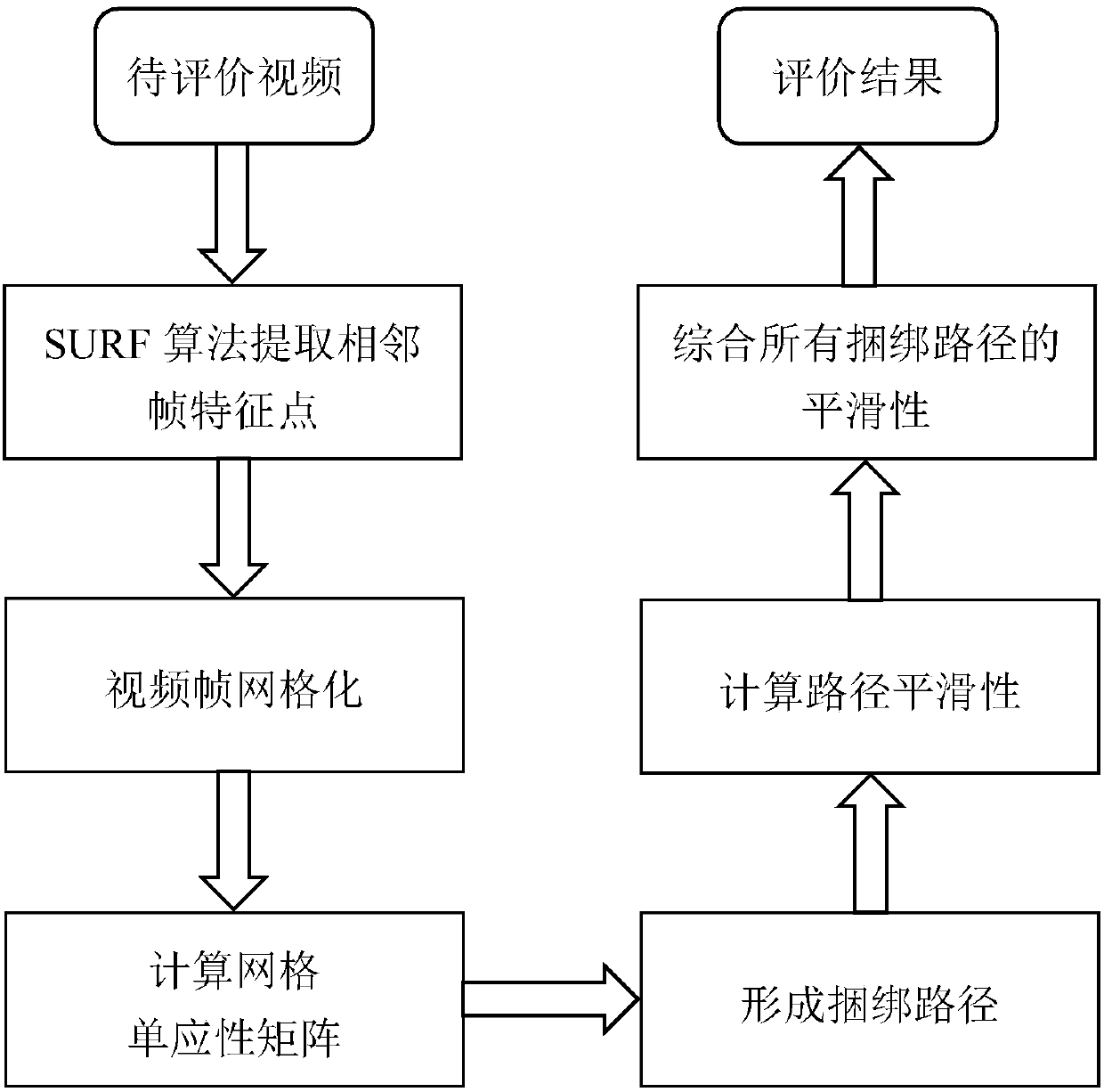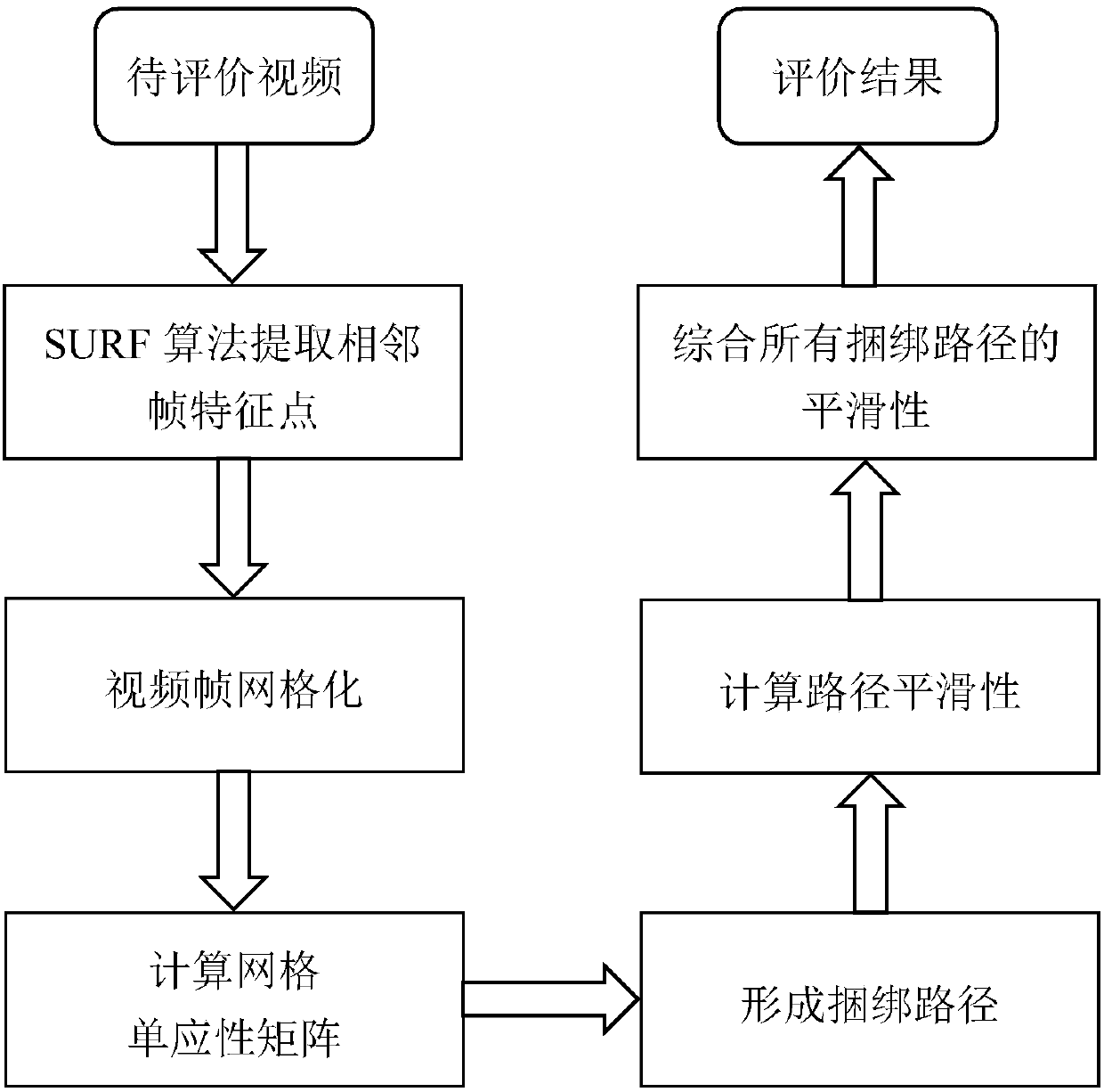Non-reference video stability quality evaluation method based on inter-frame motion smoothness
A video stabilization and quality evaluation technology, applied in the field of video processing, can solve problems such as inaccurate evaluation methods and contradictions in subjective quality evaluation
- Summary
- Abstract
- Description
- Claims
- Application Information
AI Technical Summary
Problems solved by technology
Method used
Image
Examples
Embodiment 1
[0063] This embodiment describes a specific embodiment of applying a non-reference video stabilization quality evaluation method based on inter-frame motion smoothness of the present invention.
[0064] Adopt method described in the present invention, concrete realization steps are as follows:
[0065] Step A, the SURF algorithm extracts adjacent frame feature points;
[0066] Specifically in this embodiment, for the video to be evaluated, the feature points of adjacent frames are extracted, specifically:
[0067] In an image, there are many features representing image attributes or categories, including shape features, color features, texture features, etc.; in order to obtain the motion transformation relationship between frames, the image frame I is first detected t (t=1, 2,..., n, n represents the number of image frames) feature points. When extracting feature points, generally select Harris corner points or SIFT feature points (D.G.Lowe.Object recognition from local sca...
Embodiment 2
[0112] In this embodiment, the effectiveness of the present invention is verified by comparing the stabilization quality evaluation results of the stabilized video obtained by using six video stabilization algorithms and the original shaken video with the subjective evaluation results through objective calculation.
[0113] The original video data set is divided into twelve types of videos, including simple, rotation, zooming, riding, running, climbing, driving, rolling shutter, dark, crowd, large parallax and near-range object. The six video stabilization algorithms are the full-frame method (FF), the spatially and temporally optimized method (STO), bundled paths methods (PB), Adobe AfterEffects (AE) warp stabilizer, Google YouTube stabilizer, and VirtualDub Deshaker. The calculation results are shown in Table 1:
[0114] Table 1 Ranking of different video stabilization algorithms: the video stabilization quality evaluation results of the present invention and the subjective ...
Embodiment 3
[0118] This embodiment calculates the correlation between the evaluation results of the other three no-reference video stabilization quality evaluation algorithms and the evaluation results of subjective quality evaluation, and then compares it with the correlation of the results calculated by the present invention in Example 2 to verify Advantages of the present invention.
[0119] The three no-reference video stabilization quality evaluation algorithms used in this embodiment are ITF (Battiato S, Gallo G, Puglisi G, et al.SIFT Features Tracking for Video Stabilization[C] / / International Conference on Image Analysis and Processing. IEEE Xplore,2007:825-830.); LHR(Liu S, Yuan L, Tan P, et al.Bundled camera paths for videostabilization[J].Acm Transactions on Graphics,2013,32(4):1-10. ); There is also an evaluation method for 2D curvature. The original video data set used is the twelve types of videos in Example 2. The comparison results are shown in Table 2:
[0120] Table 2 ...
PUM
 Login to View More
Login to View More Abstract
Description
Claims
Application Information
 Login to View More
Login to View More - R&D
- Intellectual Property
- Life Sciences
- Materials
- Tech Scout
- Unparalleled Data Quality
- Higher Quality Content
- 60% Fewer Hallucinations
Browse by: Latest US Patents, China's latest patents, Technical Efficacy Thesaurus, Application Domain, Technology Topic, Popular Technical Reports.
© 2025 PatSnap. All rights reserved.Legal|Privacy policy|Modern Slavery Act Transparency Statement|Sitemap|About US| Contact US: help@patsnap.com



